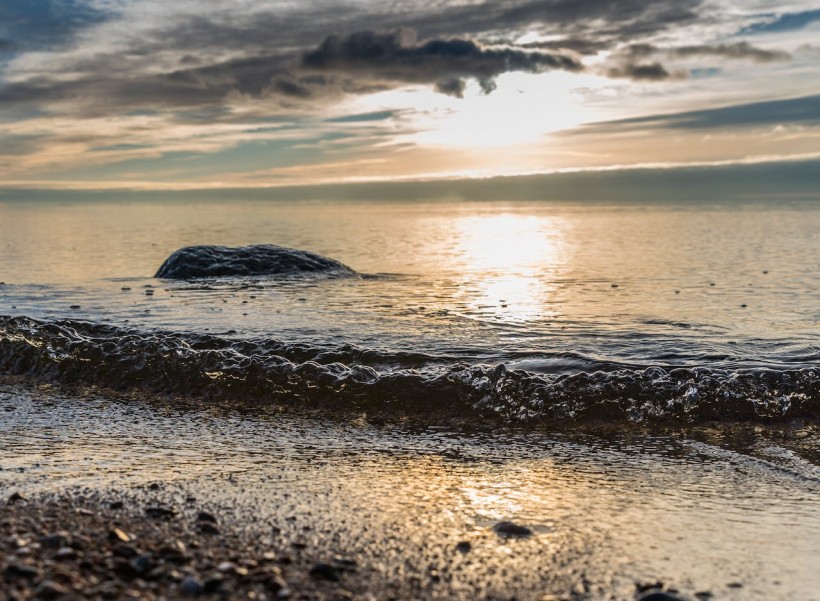Experts know little about the oceanic conditions when life first evolved on Earth. In a groundbreaking study, a team of researchers revealed the geological processes that controlled the availability of nutrients living organisms need.

Ancient Seawater Conditions
All forms of life use nutrients like zinc and copper to produce proteins. It was believed that the oldest life on Earth evolved in the Archean Eon, about three and a half billion years before the appearance of the first dinosaurs. The earliest living organisms were assumed to be microbes, which preferred metals like manganese and molybdenum. Such preference is thought to reflect the availability of metals in the ocean at that time.
It was found that greenalite, a mineral that is common in Archean rocks, rapidly formed and removed vanadium, copper, and zinc in the process. Experts agree that greenalite was important during the early years of the Earth because it was commonly found in old rocks like the iron ore in the Northern Cape, South Africa, and similar rocks in Australia.
Scientists believe that greenalite could be one of the most important minerals during the Archean period, but they do not precisely know how it was formed in nature. One possible explanation is that greenalite is created deep in the ocean at hydrothermal vents. However, it could also have been included in shallow waters, where there was a slight change in pH level.
As greenalite formed in ancient oceans, these metals were removed from seawater, leaving the oceans rich in other metals like cadmium, molybdenum, and manganese. The metals predicted by researchers to have been most abundant in Archean seawater match the metals preferred by early lifeforms, explaining why they were favored during the early stage of evolution.
Experts agree that the Archean seawater differed significantly from its modern counterparts since it has more dissolved iron, silica, and little oxygen. Because of this, there is little agreement about the other aspects of seawater chemistry, like the concentration of nutrients.
Deciphering the Secrets of Early Oceans
A team of experts from the University of Cape Town (UCT) and the University of Oxford recreated the condition of this ancient seawater. Going back in time to sample and analyze seawater is impossible, so it is quite challenging to recreate Archean conditions. One possible solution is to look at the chemical makeup of sedimentary rocks, but the chemistry of ancient rocks is sometimes altered. Because of this, experts decided to make a miniature version of ancient seawater in the laboratory, where they could directly observe the changes.
Dr. Rosalie Tostevin from the University of Oxford and her colleague Imad Ahmed recreated Archean seawater inside a special oxygen-free chamber and watched the formation of greenalite. As the minerals formed, dramatic changes in the metal concentrations of seawater were formed. They used X-ray absorption Spectroscopy at the Diamond Light Source synchrotron to prove that the metals were entering the minerals. Meanwhile, other metals seemed unaffected by the process and stayed at high levels in seawater.
The researchers decided to run their experiments under both ocean conditions - deep and shallow. They discovered that regardless of the formation of greenalite, the metals were removed similarly. The result of their study matched the predictions of biologists who used a completely different approach.
One mystery that baffled the researchers was whether the metals would be locked up for a long time or released back into seawater after several months or years. To answer this question, Tostevin and Ahmed heated the minerals to simulate the conditions when they were buried and underwent crystallization. It was found that the metals remained trapped in the minerals, indicating a permanent sink for metals, which would have profoundly affected early seawater.
RELATED ARTICLE: Deep Sea Fossil Spines Provide Evidence of the First Forms of Life on Earth
Check out more news and information on Archean in Science Times.














